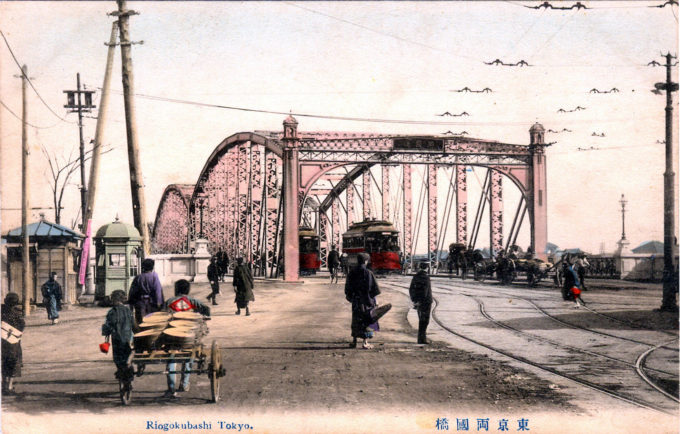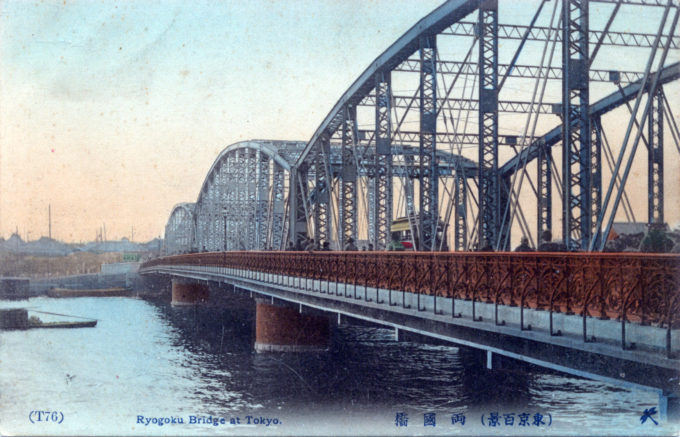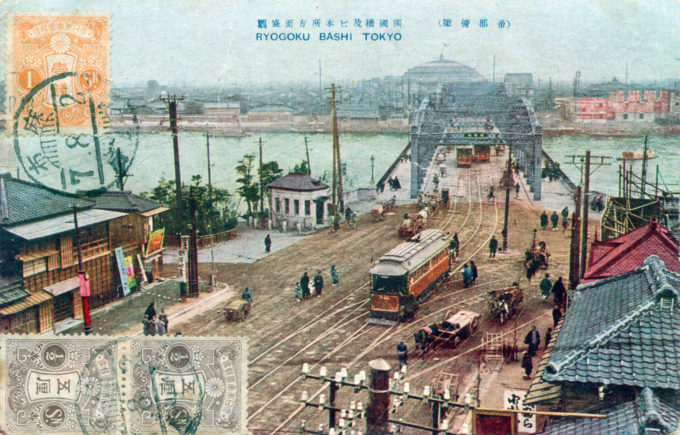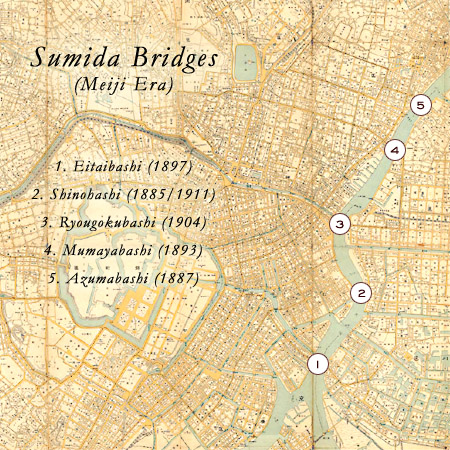Nagai, nagai, Ryogoku-bashi nagai!
Nagai Ryogoku-bashi Suzumi ni detara,
O-ko-sama-gata ga Yakata no fune de
Hikuya, kataruya,
Yare omoshiroya, yare omoshiroya!
Bon odori!
Long, long – the Ryogoku Bridge is long.
Had you gone there to get cool
on the long Ryogoku Bridge, oh!
to see the honorable children in the pleasure-boats,
and to hear the musicians and the reciters!
How pleasant it was, how pleasant!
And the festival dance, too,
The Bon Odori!
– Shadowings and Japanese Miscellany, by Lafcadio Hearn, 1900
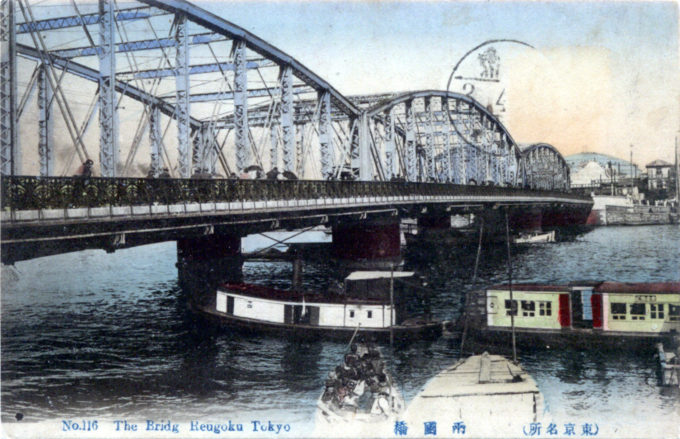
A pleasure-boat passes beneath the Ryogoku Bridge, c. 1910. In the distance can be seen the dome of Kokugikan, the National Sport (Sumo) Hall.
See also:
Sumida River Fireworks, c. 1930-40
Kokugikan (National Sport Hall).
“The most famous of the Meiji Sumida bridges and the widest (24.5 meters) was Ryogokubashi, a three-span steel truss finished in 1904. The middle bridge of the river, it was a heavily used crossing and also the best place to view the fireworks at the traditional summer ceremony ‘opening the river,’ an occasion marked since the end of Edo by festive drinking and singing along the banks and on the water.
“The new bridge seemed dressed for celebration. Its basic Parker truss (a Pratt truss with a polygonal upper chord) was trimmed with the decorative brackets and a calligraphic nameplate across the portal. The end posts on both sides of the river bore Palladian finials, each with a dome and spires.”
– Meiji Revisted: The Sites of Victorian Japan, by Dallas Finn, 1993
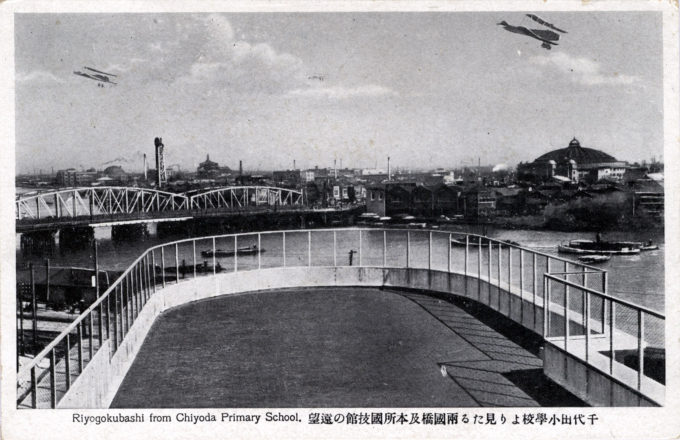
Ryogokubashi (left) and Kokugikan (right) from the deck of the Chiyoda Elementary School, with aeroplanes, c. 1920.
- Ryogoku Bridge, c. 1910, looking west.
- Ryogoku Bridge, c. 1910, looking east.
“Ryogoku-bashi is a sort of miniature Brooklyn Bridge where pyrotechnic displays are to be seen on summer nights, and from which sad souls with suicidal thoughts leap off sometimes, to smother their dark sorrow in the sooty funnel of a passing steamship!”
– Terry’s Japanese Empire, by T. Phillip Terry, 1919
The rather unusual name, Ryogoku-bashi [two countries bridge], came about because, in the early Edo era, the west bank of the Sumida was located in Musashi province; the east bank was located in less-developed Shimosa province.
The Ryogoku bridge was the first of three Edo-era to span the Sumida River, first erected in 1659 of wood across the river near its confluence with the Kanda River two years after the devastating Meireki [Long sleeves] Fire. This effectively annexed the east side of the river, considered to be a less incendiary district (at that time), into Edo for the development and expansion of Shitamachi [the Low City] with the construction of docks and storage yards.
The modern-era iron truss span was completed in 1904. Destroyed in the 1923 earthquake, the present-day steel span at Ryogoku spanning the Sumida river was completed in 1932.


